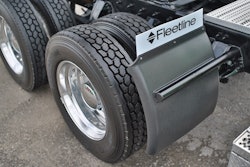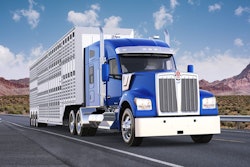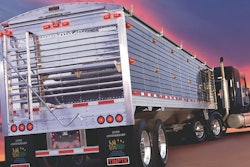
But in an industry like this one, where available floor or shelf space is a rarity, if not altogether nonexistent, parts providers must do their homework to determine the right products to add to their inventory.
Decisions, decisions
Daimler Trucks North America (DTNA) holds frequent discussions with its customers, dealers and suppliers about trends in the industry, what and where demand is and what products need to be added to its offering, says Brad Williamson, director of marketing, Alliance Parts and Detroit Reman.
He says the company has added nearly 20 lines to its DTNA Parts and Alliance Parts brands in the last few years, including shocks, bumpers, wheels and aftertreatment parts.
“We evaluate our total offering from DTNA Parts to make sure we have the products the customers need in genuine, premier and value offerings,” he says. “Alliance is a growing offering where we are adding products regularly to meet the customer’s needs.”
At Texas Trucks Direct, two main reasons the company will add a product line is to strengthen its position as a one-stop shop for customers and to satisfy customers’ want-it-now predilections. The company has added turbochargers, seats, fenders, charge air coolers, wheel ends, fifth wheels and radiators in the past year alone.
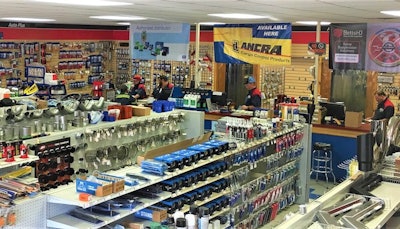 Texas Trucks Direct adds product lines to strengthen its position as a one-stop shop for customers.
Texas Trucks Direct adds product lines to strengthen its position as a one-stop shop for customers.“We’re kind of out here sequestered from everybody, so if we think somebody will buy it, we’ll put it in stock,” says Parts Manager Sean Mayfield of his shop’s Stephenville, Texas, location, which is 90 minutes away from the Dallas-Fort Worth area.
Adds Owner Jerry Cozby, “What we’re trying to do is keep a captive audience here. We want us to be their only consideration. We’re the one-call, one-stop shop. So, we try to display as much as we can, have examples of everything we can handle.”
Capitol Clutch & Brake similarly relies on customer input to curate and expand its product lines.
Discussions about what parts and products to add or drop are ongoing, says Owner Vince Mathews, with about 90 percent of line additions the result of customer requests.
“We talk about it constantly, along with other essential subjects such as pricing, margins, customer service, supplier performance and warranties,” Mathews says.
Adding services can be beneficial, too, since many equipment owners prefer to deal with a single, reliable service partner as much as possible.
Over the last two years, Consolidated Truck Parts & Service has expanded its cleaning of diesel particulate filters and diesel oxidation catalysts from one location to three and increased its diagnostic capabilities to more accurately diagnose repairs and produce estimates more quickly to expedite the time trucks spend in its bays, says Owner Rudy Niswanger.
Primarily a service shop, Niswanger says the rationale behind a service Consolidated Truck Parts & Service adds is primarily driven by customer feedback. He says the company follows what’s going on in the market and will add services it believes customers will be asking for in the near future.
Benefits vs. risk
While the benefits of adding new product lines are important, they also come with the risk that those parts or products won’t sell for whatever reason. Knowing when to pull the plug is essential to properly maintaining a parts inventory.
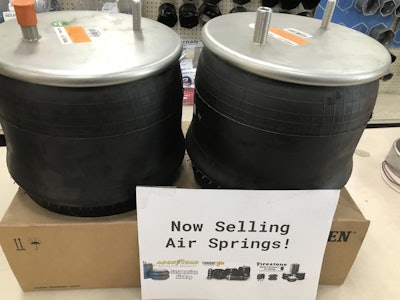 Capitol Clutch & Brake mostly relies on customer input to curate and expand its product lines.
Capitol Clutch & Brake mostly relies on customer input to curate and expand its product lines.“We have done fairly well with margins on new lines. I would say our overall margins have improved 1 or 2 points after the new additions, and that’s significant for our total sales,” Mathews says.
Having a well-rounded assortment of parts is advantageous for at least a couple reasons, according to Mayfield. It reduces the chance of making a customer wait for a part that has to be ordered and selling one part can lead to the sale of other parts.
“The new product lines are a benefit because, say you sell a radiator, you’re also going to get that coolant sale as well, or clamps and other ancillary products,” Mayfield says.
Williamson agrees adding product lines can mean more than a bump to a company’s overall margin.
“With the launch of new products in the value offering, many times it’s not margin lift but product coverage that generates the true return. Providing the customer a one-stop solution means getting more share of wallet,” he says.
But what about new parts that are added but don’t sell? Industry consensus indicates 12 to 18 months should tell the tale of whether a newly added product is worth keeping. However, that rule of thumb comes with a caveat or two.
“It doesn’t take long to make a reasonable evaluation of a new line. I would normally say a year is required but we generally know much sooner than that if it’s a good fit for us,” Mathews says.
Williamson says the length of time to determine success varies based on the product line. While some products have higher turn expectations, some have a longer time to maturity. “Often it takes months or years to make a complete evaluation,” he says.
At Texas Trucks Direct, Cozby says after a year the company will reevaluate sales performance. Some products might be moved out to make room for new products. That said, Texas Trucks Direct might decide to keep a product longer to ensure customers understand the company carries the new product and to achieve more market penetration.
Mayfield adds the parts provider doesn’t just look at how often a product sold — or didn’t sell — but also who purchased it. If a product sat for a year with the exception of maybe a lone purchase or two, the company probably will replace the product. “But if one of our big customers have bought it, then we’ll probably keep it,” he says.
Lines that are kept also must be supported. Says Mathews, “I feel it to be vitally important to not simply stock the new products your customers want, but to be able to support them from a technical, installation and troubleshooting standpoint.”

